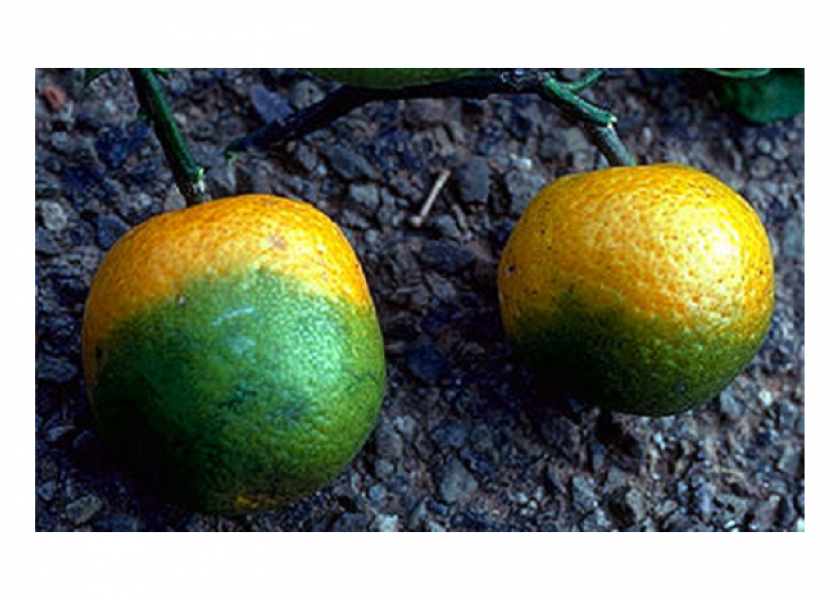California researchers find promising HLB treatment

University of California-Riverside scientists have found a substance that can control huanglongbing, aka HLB, in a specialty citrus item.
The treatment kills the bacterium that causes the disease, using a molecule found in finger limes, according to the university’s communications department.
HLB, also known as citrus greening disease, has devastated Florida’s citrus industry and has been found in other citrus-producing states. Although it’s been detected and quarantined in California, it has yet to be found in commercial groves.
The molecule the University of California researchers are studying comes from Australian finger limes, which can tolerate HLB bacteria. University geneticist Hailing Jin made the discovery after a five years of research, according to the release. The antimicrobial peptide has advantages over antibiotics currently used on the disease, and is stable in the heat, is easy to make and is safe for humans.
“It is much safer to use this natural plant product on agricultural crops than other synthetic chemicals,” Jin said in the release.
The peptide remains stable at 130 degrees, making it more stable than most antibiotics, she said.
Jin has been studying the finger lime’s ability to withstand HLB for two years, isolating the gene that provides the immunity, according to the release.
“You can see the bacteria drastically reduced, and the leaves appear healthy again only a few months after treatment,” she said in the University of California-Riverside release.
The peptide can be applied as a spray on leaves or injected into the tree, and needs to be applied just twice a year.
UC-Riverside has an exclusive agreement with Invaio Science, which has proprietary injection technology that enhances the treatment.
“The prospect of addressing this previously incurable and devastating crop disease, helping agricultural communities and improving the environmental impact of production is exciting and rewarding,” Gerardo Ramos, chief science officer for Invaio, said in the release. “This is crop protection in harmony with nature.”
The UC-Riverside Office of Technology Partnerships is interested in the treatment, Brian Suh, director of technology commercialization for the office, with the state producing 80% of the fresh citrus in the U.S., according to the release.
Related stories:
Certis USA donates for HLB research
USDA, other groups shift HLB research from lab to grove
Updated citrus nutrition guide helps growers deal with greening







